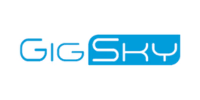
3 key factors driving eSIM adoption
The SIM applications that enable authenticated access to cellular networks are incorporated within connected devices via highly Tamper Resistant Elements (TRE). TREs are available in removable, embedded and integrated form factors (e.g. SIM card, eSIM and Integrated SIM), Trusted Connectivity Alliance (TCA) reports.
In recent years, optimism has surrounded the developing eSIM market. eSIM solutions answer a demand for flexible connectivity and future-proof security needed to enable billions of new consumer and IoT devices and use cases across our connected society.
In addition to the advanced security and cryptographic features common to all TREs, eSIMs can host multiple connectivity profiles and be remotely personalised and managed (as defined by GSMA specifications). This offers enormous potential. It brings trusted connectivity to devices that require stringent security, while also allowing those devices to be personalised in the field, receive security and connectivity updates, and be managed from remote locations. eSIM also enables a fully digitalised end-to-end user experience to promote convenience.
We are now seeing this potential starting to be realised. Global eSIM shipments are building at a significant and sustained rate, with TCA members reporting 309 million eSIM shipments in 2020 – up 83% from 2019.
And as the ecosystem continues to develop, there are three key trends that are crucial to driving eSIM adoption.
1) eSIM standardisation continuing to advance
Standardization is critical to the mass adoption of any technology, enabling the development of globally interoperable products.
eSIM standardization activity is now at an advanced stage, with GSMA reporting a significant increase in industry input over the past year. Over 180 organizations from across the mobile ecosystem contributed to the evolution of GSMA’s eSIM technical, compliance and test specifications in 2020, in addition to the launch of security assurance and identity schemes.
Trusted Connectivity Alliance (TCA) works in close partnership with GSMA and other industry associations to develop enabling specifications that support trusted connectivity. A key objective for TCA is ensuring eSIM interoperability and expanding the benefits of eSIM technology to more IoT use cases.
Specifications developed by TCA are already widely deployed to promote interoperable, secure and consistent remote eSIM provisioning. Activity is now focused on enhancing the specifications to address new marketplace opportunities and challenges.
This includes adding 5G support to reflect the fact that many eSIM-enabled devices will be 5G compatible. TCA is also collaborating with GSMA to ensure that ongoing eSIM standardization activity addresses the unique requirements of the IoT ecosystem in a simple, scalable way. For example, work is progressing to develop lightweight subscription profiles that are optimised for constrained IoT devices.
- AIRALO
-
eSIM for
Europe
39 countries
-
1 GB – 7 days – €4.27
3 GB – 30 days – €11.09
10 GB – 30 days – €31.57
- AIRHUB
-
eSIM for
Europe
34 countries
-
1 GB – 7 days – €2.99
3 GB – 30 days – €5.12
10 GB – 30 days – €11-09
- aloSIM
-
eSIM for
Europe
32 countries
-
1 GB – 7 days – €5.00
3 GB – 30 days – €13.00
10 GB – 30 days- €36.00
- GigSky
-
eSIM for
Europe
36 countries
-
1 GB – 7 days – €6.99
3 GB – 15 days – €11.19
10 GB – 30 days – €27.99
- iRoamly
-
eSIM for
Europe
39 countries
-
1 GB – 7 day – €6.83
3 GB – 15 days – €10.24
10 GB – 30 days – €18.77
- Maya Mobile
-
eSIM for
Europe
34 countries
-
1 GB – 7 days – –
5 GB – 15 days – €5.99
10 GB – 30 days- €13.99
- NOMAD
-
eSIM for
Europe
36 countries
-
1 GB – 7 days – €4.71
3 GB – 15 days – €10.27
10 GB – 30 days – €15.41
- UBIGI
-
eSIM for
Europe
29 countries
-
500 MB – 1 day – €2.00
3 GB – 30 days – €8.00
10 GB – 30 days – €19.00
- VOIA
-
eSIM for
Europe
34 countries
-
1 GB – 7 days – €2.69
3 GB – 15 days – €5.05
10 GB – 30 days- €11.70
The Best eSIM Finder brings together 100+ providers in one place, giving you a clear view of everything from data limits and business options to tethering, crypto payments, coverage, travel extras, refund policies, discounts, and reviews—so you don’t just compare plans, you understand which one truly fits your needs. Start exploring today and find the plan that fits you best.
2) eSIM-enabled devices increasing beyond smartphones
Due to the interoperability, scalability, and advanced security assurance levels afforded by standardization initiatives, eSIM growth is expected to ramp up massively over the coming years as the number of eSIM-enabled devices increases.
eSIM shipment increases reported by TCA in 2020 were predominantly driven by the launch of new eSIM-enabled smartphone models and smartwatches. Regulations such as the European eCall initiative – which mandates all cars are equipped with emergency calling capability – has also promoted high eSIM uptake across vehicle manufacturers.
As we look ahead, Counterpoint Research predicts that a combined total of over six billion eSIM-enabled devices will be shipped by 2025. Smartphones will remain the key growth driver, accounting for over half of eSIM shipments. Other devices that benefit from secure, ‘always-on’, standalone mobile network connectivity will also drive an increase in e SIM card utilisation. These include vehicles, smartwatches, wearables, tablets and PCs, and 5G routers, as well as myriad smart home gadgets.
eSIM technology is also set to support the growth of connected devices and applications across industry verticals including healthcare, manufacturing and smart agriculture.



















